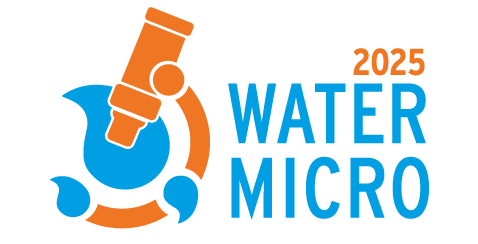Kyle McGaughy1, Sam Arden1, Ben Morelli1, Cissy Ma2, Michael Jahne2, Jay Garland2
1Eastern Research Group, Concord, USA. 2U.S. Environmental Protection Agency, Cincinnati, USA
Introduction
Pathogen treatment targets for onsite non-potable reuse (NPR) systems are based on quantitative microbial risk assessment (QMRA) models. In the U.S., treatment targets have typically been based on a benchmark infection rate of users exposed to treated water, but recently have also been expressed in terms of the more globally ubiquitous disability adjusted life year (DALY) metric. DALYs can also be used within a life cycle assessment (LCA) framework to characterize distal impacts to wider populations that result from the construction and operation of the treatment systems themselves, such as air pollution or greenhouse gas emissions from energy use. By expressing direct health risks to the end users of water (referred to here as “proximal” risk) in the same units as the distal life cycle risks, we can not only directly compare tradeoffs in total DALY burden but also start to explore more subjective and challenging questions such as how these more distal risks should be considered, if at all, in future water management decisions.
Side event objective
• Inform the audience about ongoing work in assessing human health risk, economic cost and environmental impacts of onsite non-potable water reuse systems. • Educate the audience about the difference between midpoint and endpoint impacts within LCA, and how the DALY metric can be used to quantify impacts to various populations at multiple scales. • Illustrate scenarios where LCA can help aid decision making around water reuse choices. • Create dialogue with/amongst the audience about what cost and risk-based factors should be considered in water management decisions. • Receive input from the audience about which risk burdens are most important when thinking about the design and implementation of onsite NPR systems and, by extension, water treatment systems more broadly. • Receive input from the audience about specific scenarios where life cycle cost and impact information would be useful for decisions making.
Methodology/format
Presentation of ongoing work evaluating how water treatment standards affect life cycle impacts of non-potable water reuse systems and how impacts to human health are distributed amongst local and global populations. First, we will provide a brief introduction to the evolution of QMRA-based treatment targets for onsite NPR systems in the U.S. Next, we will provide a methodological overview of the U.S. EPA’s NEWR Calculator, including a discussion of newly incorporated DALY metrics. Using the current range of treatment targets recently laid out by the National Blue Ribbon Commission for Onsite Non-potable Water Systems in the U.S., we will explore risk and cost implications. Finally, we will show how climate, geography, system size and system type affect system cost and DALY burden. Additionally, we will illustrate tradeoffs in risk burdens across different populations.
Following the presentation, we will dedicate time for Q&A, which will lead into an interactive component of the side event. Using a web-based survey application, the audience will be asked questions designed to elucidate their opinions on the relative importance of risk burdens at multiple scales and to multiple populations. The audience will also be presented with specific water reuse scenarios and asked about the relative importance of different risk factors in these cases. For example, should a community evaluating reuse systems consider how chemical manufacturing affects workers outside of their town? Should the town consider how greenhouse gas emissions may affect global climate change? The interactive component will close with a review of survey results.
Expected outcome
Attendees will:
- Learn how QMRA is used to inform treatment standards in water reuse systems
- Learn how endpoint impact indicators can be used to characterize impacts to populations that range from end users to global populations
- Understand quantitative environmental and cost implications of different treatment targets for onsite NPR systems
- Identify key aspects of treatment system design and operation that contribute to environmental impacts, allowing for consideration of steps that can be taken to improve system sustainability
- Recognize key drivers of life cycle endpoint impacts in non-potable water reuse systems, such as geography, precipitation, and local electricity grid
- Gain perspective on the distribution of relative importances assigned to different types of risks associated with water treatment systems by fellow water practitioners
The project team is considering publishing the results of the audience feedback component, which may be supplemented with feedback the project team is seeking from other conferences.
